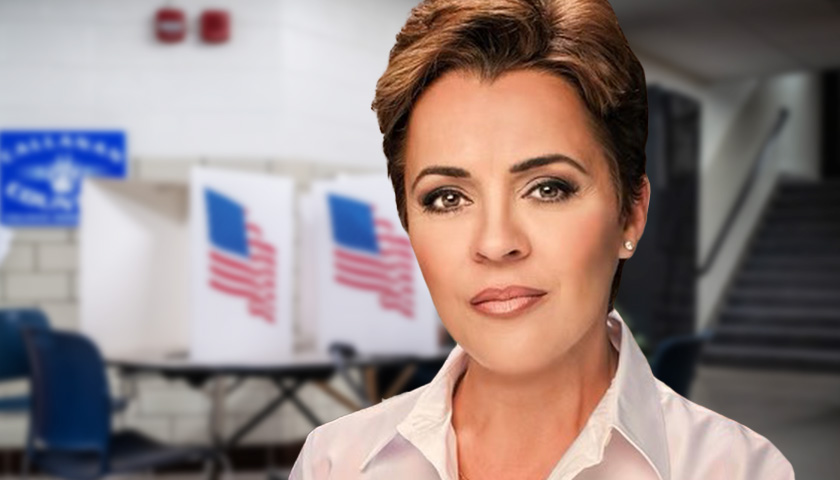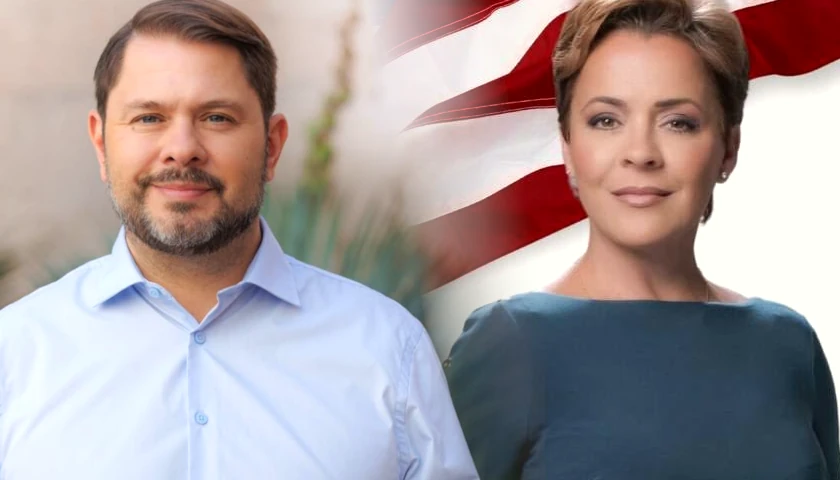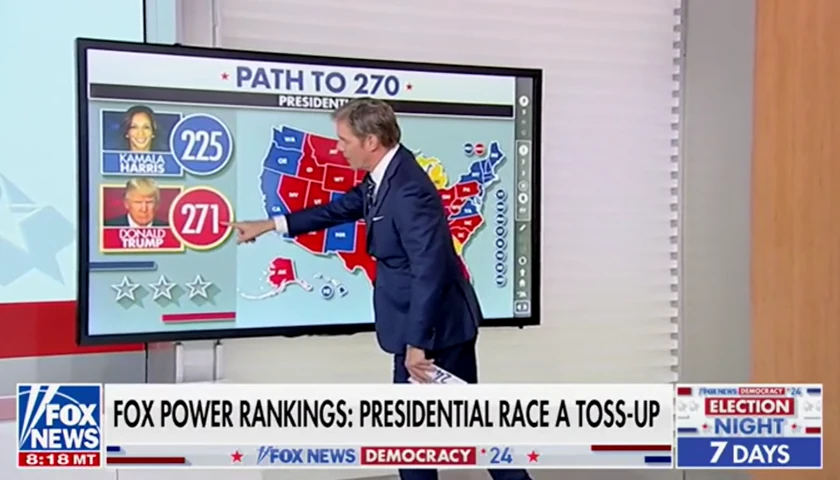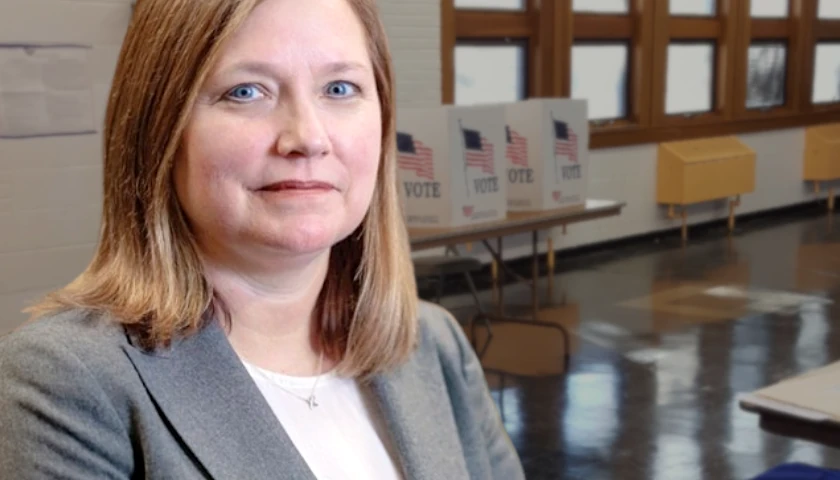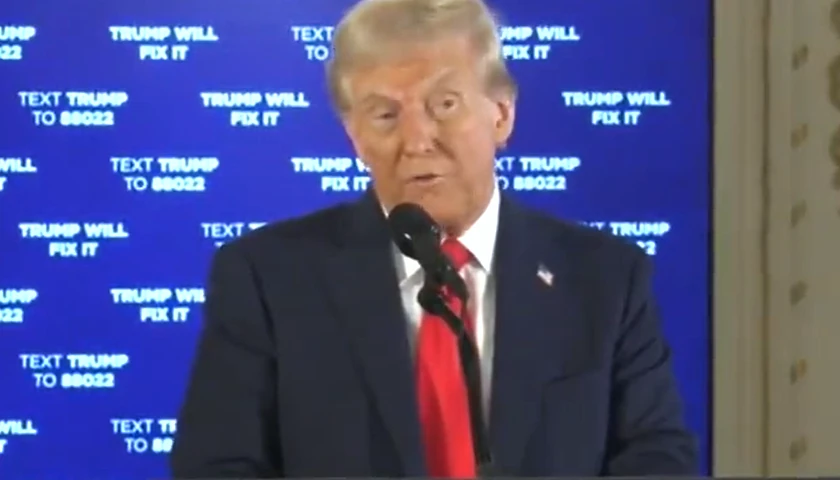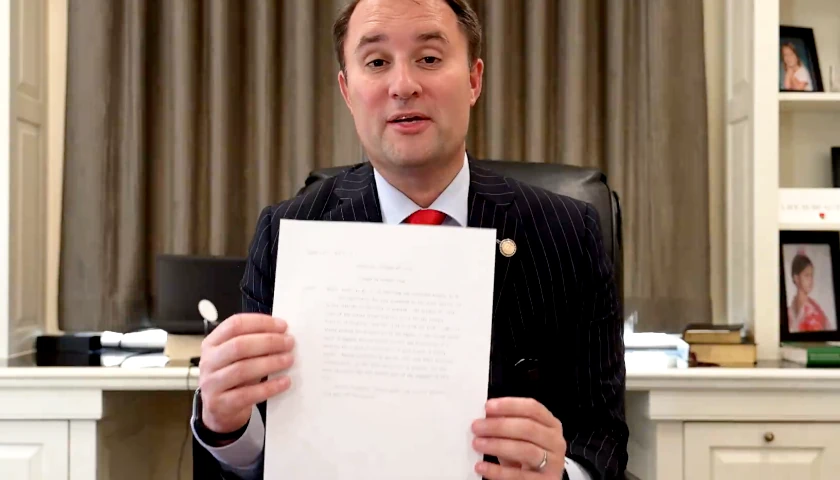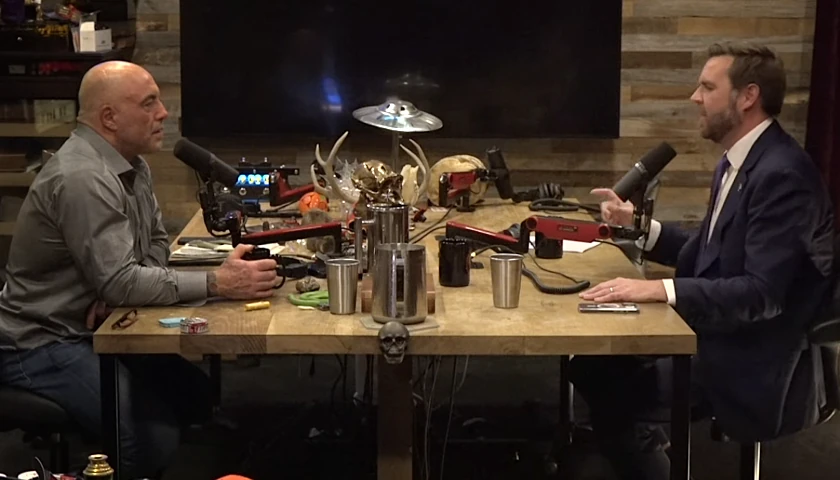Kari Lake’s second trial challenging her gubernatorial loss concluded on Friday, with Maricopa County Superior Court Judge Thompson giving no indication when he would issue his ruling.
In March, the Arizona Supreme Court reversed part of Thompson’s original decision dismissing her case, remanding the signature verification issue back to him for reconsideration. The trial has focused on the speed that signature reviewers examined signatures on mail-in ballot envelopes, which Lake’s team did not believe was physically possible.
Lake’s attorney Kurt Olsen said Maricopa County failed to refute their case, since they brought no expert to dispute Lake’s expert who found that 274,000 ballot envelope signatures were compared for validity in 3 seconds. “The defendants didn’t offer any rebuttal to his testimony,” Olsen said.
Maricopa County Elections Director Rey Valenzuela, who took the witness stand on both Wednesday and Thursday, returned for more questioning on Friday. Lake’s team had alleged that around 70,000 signatures were reviewed in less than one second each, so his attorneys attempted to explain away those numbers.
Valenzuela said 44,799 of those were people who showed up at vote centers with early ballots, whose ID was verified there so no signature verification was necessary. He said those were automatically added so they would show up as being added in zero seconds.
However, Olsen pointed during his closing statement that Erich Speckin of Speckin Forensics, who testified the day before, said those numbers were not included in the analysis he performed of signature review times. Olsen said Valenzuela gave incorrect testimony.
Specklin created a spreadsheet of signature review times obtained from public records requests and discovery from the county, which he relied on during his testimony. Specklin explained that mail-in ballots that were automatically dumped into the results without signature review came from users 9 and 26. Valenzuela acknowledged that user 26 added those types of votes. Specklin said he took out those 44,799 votes, known as “counter ballots” since they’re cast by early ballot voters who visit the counter at vote centers, from the approximately 321,000 mail-in ballots he examined, resulting in 274,000 votes for his analysis.
Valenzuela also claimed that another 15,111 early ballots belonging to “those who work there” would have only showed less than a second, as well as 3,800 overseas and military ballots, which were added by user 9. There was a dispute between the attorneys over whether those ballots were included in Speckin’s analysis, but Olsen pointed out that it was such a relatively small number it didn’t make much of a dent reducing the 274,000 with extremely short verification times.
Valenzuela gave varying responses when asked how long it took to verify signatures. On Thursday, he said it took 2 to 4 seconds, then later 1 second, then 1 to 2 seconds, then finally saying it took himself less than a second. Blehm asked him regarding signatures that were a close match, “You testified that those that were close could take 3, 4, 20 seconds?” Valenzuela responded, “Correct.”
In Olsen’s closing statement, he pointed out that the high approval rates for signatures, which were all close to 99.99 percent, didn’t reflect Valenzuela’s experience reviewing them personally. “Valenzuela testified that when he reviewed approximately 1,600 ballots, he rejected about 311,” Olsen said. “That’s a pass rate of about 81%.”
At one point, while Lake’s attorney Bryan Blehm was questioning Valenzuela about Specklin’s spreadsheet, Valenzuela admitted he did not understand the difference between an average and a percentage.
Mr. Valenzuela was tasked to refute our numbers by Maricopa County.
And has just admitted in open court that he cannot tell the difference between an average and a percentage.
— Kari Lake War Room (@KariLakeWarRoom) May 19, 2023
In his closing statement, Olsen referenced a letter former Attorney General Mark Brnovich sent in April 2022 to then-Senate President Karen Fann (R-Prescott). His office’s Election Integrity Unit civil attorney Jennifer Wright found “problematic system-wide issues that relate to early ballot handling and verification.” The signature verification system in place within Maricopa County is “insufficient to guard against abuse,” Brnovich said. Part of the problem, he said, was that election workers only had seconds for each signature verification, an average of 4.6 seconds.
Olsen added, “And regardless of whether the county believes they debunked the statement that there were 206,000 ballots that were processed in 4.6 seconds, what’s not been debunked is the actual county data that underpins plaintiffs claims that shows as plaintiff’s expert testified, that over that approximately 274,000 ballots out of 1.3 million cast were ‘process work compared’ and the signature verified purportedly in less than 3 seconds a ballot; 70,000 in less than 2 seconds a ballot.”
He explained how this extremely fast review did not comply with A.R.S. 16-550(A), which was “designed to stop voter fraud.” He went on, “There are defined criteria for comparing a signature with a record statement or to verify whether it is consistent or not.” Olsen said the word “shall” means comparing signatures is “mandatory,” and “the law is not that flexible.”
He declared, “Parking a signature verification worker in front of a computer screen while they tap on the keyboard and scroll through valid images or valid signature images is not signature verification, in accordance with the law.” He compared it to reading, “If I flip the pages of a book thumbing through them. I can say I’m reading it, but it’s not so.”
Olsen expressed his concern that only after digging into the circumstances, did Lake’s team discover that the county had additional signature reviewers that were not working on camera with observers watching them; employees were conducting signature review in their private offices and remotely from home. He referenced Level 1 signature reviewer Andy Meyers, who testified on the first day of the trial that the Level 2 workers told him they were overwhelmed, not realizing there were others doing things secretly. “Why, why was this all done behind closed doors? That is the secret army that Maricopa employed that goes to the heart of the observation of Andrew Meyers, who testified that the math never added up.”
Olsen concluded by citing the standard Lake’s team was required to prove. “Maricopa’s own timestamp log data proves by clear and convincing evidence that Maricopa is not conducting signature verification. … 70,000 ballots approximately were reportedly compared and verified. Within less than two seconds. … [We have provided a] competent mathematical basis to conclude that the outcome would plausibly have been different and not simply tethered to an assertion of uncertainty.” He asked Thompson to set the election aside.
Maricopa County Deputy Attorney Tom Liddy provided the closing statement for the defendants. He refused to accept the results of Speckin’s analysis, pointing out that even though Speckin and Valenzuela extensively discussed the analysis, it was never admitted as an exhibit. He insisted that the standard that Lake must prove is that signature verification never happened at all in the election.
In Thompson’s order setting up the second election trial, he stated, “Plaintiff will be allowed to present evidence that Maricopa County failed to conduct any level 1 signature verification.” However, the Arizona Supreme Court did not expressly state that when it remanded the case back to Thompson, and the parties in the case have extensively relied on Reyes v. Cuming, an extremely similar case where signatures on the envelopes were not compared to the voter registration list, violating a non-technical statute.
In Reyes, the Arizona Court of Appeals did not state that there must be zero signature verification that took place in order to overturn the election. The court said that where “almost one-third of the ballots cast counted without compliance with A.R.S. section 16-550(A), the trial court abuses its discretion by finding that the Recorder substantially complied with the statute. To rule otherwise would ‘affect the result or at least render it uncertain,’” citing Miller v. Picacho Elementary School District No. 33.
The court concluded, “Miller established that an election contestant need only show that absentee ballots counted in violation of a non-technical statute changed the outcome of the election; actual fraud is not a necessary element. … Therefore, the trial court’s finding that there was no evidence that any ballots were cast by persons other than registered voters is irrelevant.”
– – –
Rachel Alexander is a reporter at The Arizona Sun Times and The Star News Network. Follow Rachel on Twitter. Email tips to [email protected].
Photo “Kari Lake” by The Kari Lake. Background Photo “Election Day” by Phil Roeder. CC BY 2.0.

